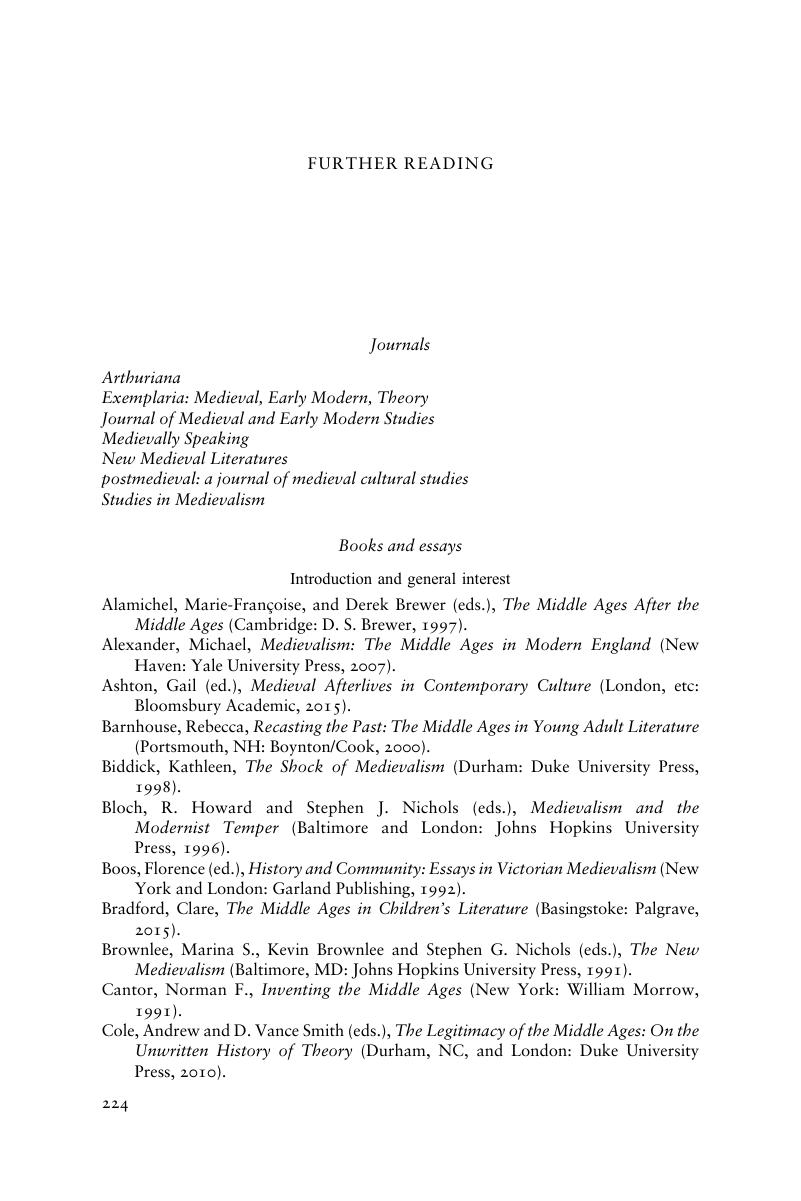Book contents
- The Cambridge Companion to Medievalism
- The Cambridge Companion to Medievalism
- Copyright page
- Contents
- Figures
- Contributors
- Book part
- Introduction
- 1 Medievalism in British poetry
- 2 Medievalism and architecture
- 3 Medievalism and cinema
- 4 Musical medievalism and the harmony of the spheres
- 5 Participatory medievalism, role-playing, and digital gaming
- 6 Early modern medievalism
- 7 Romantic medievalism
- 8 Academic medievalism and nationalism
- 9 Medievalism and the ideology of war
- 10 Medievalism in Spanish America after independence
- 11 Neomedievalism and international relations
- 12 Global medievalism and translation
- 13 Medievalism and theories of temporality
- 14 Queer medievalisms
- Further reading
- Index
- Cambridge Companions to Culture
- References
Further reading
Published online by Cambridge University Press: 05 March 2016
- The Cambridge Companion to Medievalism
- The Cambridge Companion to Medievalism
- Copyright page
- Contents
- Figures
- Contributors
- Book part
- Introduction
- 1 Medievalism in British poetry
- 2 Medievalism and architecture
- 3 Medievalism and cinema
- 4 Musical medievalism and the harmony of the spheres
- 5 Participatory medievalism, role-playing, and digital gaming
- 6 Early modern medievalism
- 7 Romantic medievalism
- 8 Academic medievalism and nationalism
- 9 Medievalism and the ideology of war
- 10 Medievalism in Spanish America after independence
- 11 Neomedievalism and international relations
- 12 Global medievalism and translation
- 13 Medievalism and theories of temporality
- 14 Queer medievalisms
- Further reading
- Index
- Cambridge Companions to Culture
- References
Summary

- Type
- Chapter
- Information
- The Cambridge Companion to Medievalism , pp. 224 - 233Publisher: Cambridge University PressPrint publication year: 2016

